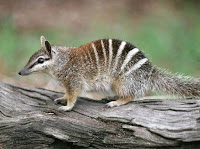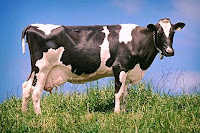.
 Aardwolf
AardwolfThe aardwolf, a member of the hyena family, is found throughout southern and eastern Africa. Aardwolves travel at night hunting for food, which consists of carrion (dead and decaying animal flesh) and insects, usually termites. They have weak jaws and small teeth, leaving them without defenses against enemies such as dogs.
 Abyssinian
AbyssinianAbyssinians are particularly affectionate and have fine, soft fur resembling that of a wild rabbit. The origin of the cat is unknown, although its appearance suggests a relationship to the cats of ancient Egypt. It is one of the oldest breeds of domesticated cat.
 Afghan Hound
Afghan HoundThe Afghan hound, similar to the greyhound, originated in Afghanistan and was known in ancient Egypt. A capable hunting dog, the Afghan hound is a swift runner and a powerful jumper.
 African Elephants
African ElephantsAfrican elephants live in grassy regions south of the Sahara Desert. Bull (male) elephants stand about 3.4 m (11 ft) tall and weigh about 5.4 metric tons, while cow (female) elephants stand 2.8 m (9 ft) tall and weigh about 3.6 metric tons. They have no sweat glands, so they like to cool off by rolling in ponds and streams. The mud that dries on their skin protects it from the sun.
 Agouti
AgoutiA large rodent common to the forests of Central America and central-northern South America, the swift, ground-dwelling agouti feeds on leaves, roots, and fallen fruit. The agouti is hunted by farmers because it destroys crops in agricultural areas.
 Akhal-Teké
Akhal-TekéA prized desert horse, the Akhal-Teké has been bred and raised for at least 3000 years, and may have been an ancestor of the Arabian. Remarkable endurance and resistance to heat give the powerful yet graceful Akhal-Teké an edge in competitive long-distance riding and show jumping.
 Alaskan Malamute
Alaskan MalamuteThis Alaskan Malamute has dense, layered fur as a shield from severe weather. The nomadic Mahlemuts, an Inuit people of northwestern Alaska, first bred the Alaskan Malamute as a sled dog to haul their belongings. Ranging from light gray to black in color, Alaskan Malamutes are also popular as pets and show dogs.
 Alpine Ibex
Alpine IbexFamous for its surefootedness in steep, rocky terrain, the Alpine ibex is one of four species of mountain goat in the genus Capra. The Alpine ibex was on the brink of extinction from overhunting and habitat destruction in the early 20th century, but is now protected and rebuilding herd populations in Italy’s Gran Paradiso National Park and other European wildlife preserves.
 American Black Bear
American Black BearThe American black bear lives in forests throughout North America, from Alaska and Canada to mountains in northern Mexico. Unlike most other bear species, the American black bear has adapted to human encroachment on its habitat, and it is able to survive in populated suburban areas. Despite the bear’s common name, the color of the American black bear ranges from black to brown, cinnamon, beige, and even pure white.
 Antarctic Fur Seal
Antarctic Fur SealThe Antarctic fur seal is one of 14 species of eared seals. Fur seals are polygamous and assemble in huge breeding colonies beginning in October. Breeding females feed exclusively on small, shrimplike crustaceans called krill, whereas males feed on krill, penguins, and fish. Although most eared seal populations have been decimated by overhunting, the Antarctic fur seal has rebounded from near extinction in the late 1800s to a current population of between 700,000 and 1 million animals.





































